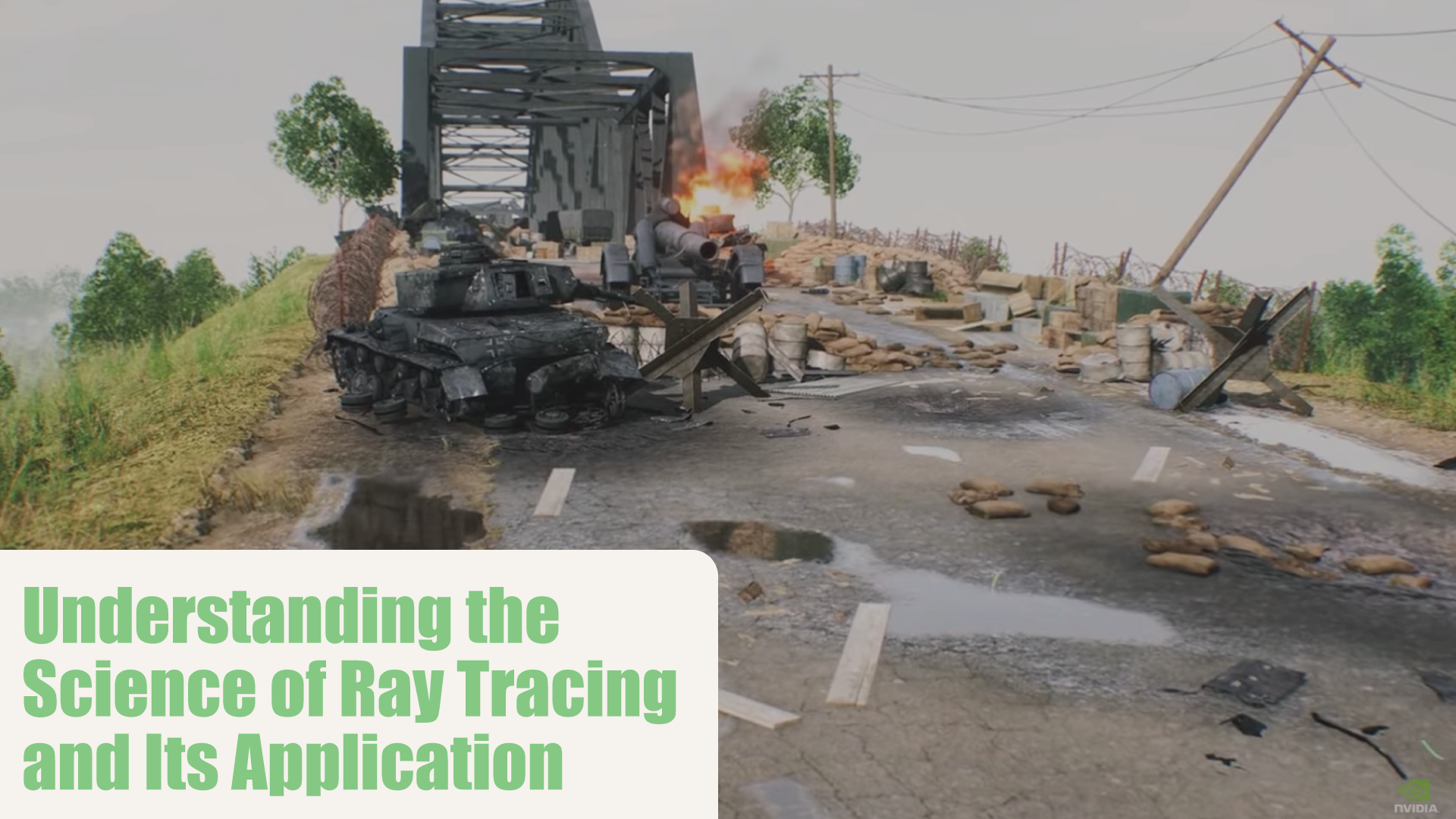Ray tracing, a term often associated with high-end film animations and ultra-realistic video games, represents a pinnacle of rendering technology. It simulates the way light interacts with objects to produce images of unparalleled realism. This blog post delves into the science behind ray tracing and its transformative impact on real-time graphics in gaming and other visual simulations.
What is Ray Tracing?
At its core, it is a rendering technique used to create lifelike images by tracing the path of light as pixels in an image plane, thereby simulating the effects of its encounters with virtual objects. Consequently, this method calculates color, intensity, and shadows by simulating the interactions between rays of light and the materials in the environment.
Key Concepts

- Reflection and Refraction: Ray tracing excels in accurately depicting reflections and transparency. It calculates how light bounces off surfaces or passes through them, affecting what eventually reaches the viewer’s eye.
- Shadows: Unlike simpler shading methods, it can produce complex soft shadows that occur when light is partially blocked by an object.
- Global Illumination: This is the simulation of indirect light bouncing from surfaces in the environment, contributing to the overall illumination of a scene.
How Ray Tracing Works
- Ray Generation: The process starts by casting rays from the eye (camera viewpoint) into the scene.
- Ray Intersection: Each ray checks which objects it intersects with in the virtual world.
- Shading: The color and intensity of each point a hits are calculated based on the light source, material properties, and the viewpoint.
- Recursion for Reflection and Refraction: Rays are recursively cast when dealing with reflective or transparent materials to simulate secondary light paths.
Ray Tracing in Real-Time Graphics
Historically, the computational intensity of ray tracing restricted its use to pre-rendered scenes, such as those in movies. However, advancements in graphics processing technology have enabled real-time ray tracing in video games and interactive media.
The Role of Modern GPUs
Modern GPUs, particularly those equipped with dedicated cores such as NVIDIA’s RTX series, significantly accelerate the rendering process. Consequently, this advancement makes real-time ray tracing feasible, thereby transforming how graphics are produced in various applications.
Applications and Impact
- Video Games: Games like Cyberpunk 2077 and Control showcase advanced reflections, shadows, and lighting effects, enhancing immersion and realism.
- Virtual Reality: It elevates the visual fidelity of VR experiences, making them more immersive and realistic.
- Architectural Visualization: Professionals can create more accurate and visually appealing previews of their projects.
Challenges and Future Directions
Ray tracing’s high demand for computational power presents challenges, especially for less capable systems. Future efforts in the field aim to refine and optimize ray tracing algorithms, enhancing accessibility and reducing hardware requirements.
Conclusion
This technology is a transforming digital rendering, promising a new era of visual realism in real-time graphics. As technology progresses, it’s poised to become a staple in various applications, bringing unprecedented immersion and detail to users everywhere.

